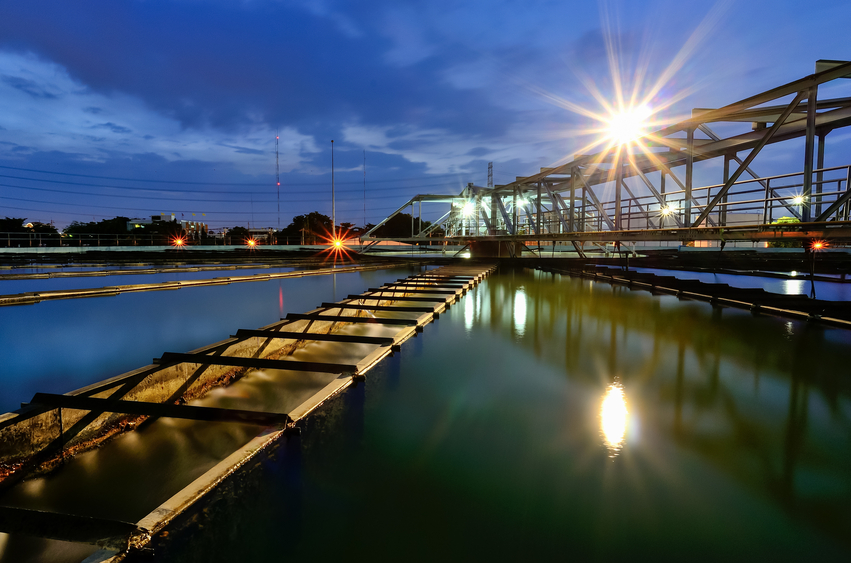Wastewater Engineering 12 PDH Discount Package 2
Courses in this Package
Package Plants for Wastewater Treatment (C01-008)
Using Combined Heat and Power at Wastewater Treatment Facilities (R04-007)
Wastewater Treatment Processes and Systems (C07-002)

This online engineering PDH course provides information about three types of package plants: extended aeration, sequencing batch reactor and oxidation ditch systems. It discusses the general configuration, typical applications, advantages and disadvantages, typical performance, and cost for each.
Package plants are pre-manufactured wastewater treatment facilities typically used to treat flows between 0.01 and 0.25 MGD.
This 1 PDH online course is intended for civil, municipal, and environmental engineers, as well as anyone interested in or involved with wastewater treatment.
This PE continuing education course is intended to provide you with the following specific knowledge and skills:
- General configuration of extended aeration, sequencing batch reactor, and oxidation ditch package plants
- Typical applications for extended aeration, sequencing batch reactor, and oxidation ditch package plants
- Advantages and disadvantages of extended aeration, sequencing batch reactor, and oxidation ditch package plants
- Design criteria for extended aeration, sequencing batch reactor, and oxidation ditch package plants
- Typical performance and costs of extended aeration, sequencing batch reactor, and oxidation ditch package plants
In this professional engineering CEU course, you need to review the U.S. EPA Wastewater Technology Fact Sheet, Package Plants (EPA 832-F-00-016).
Upon successful completion of the quiz, print your Certificate of Completion instantly. (Note: if you are paying by check or money order, you will be able to print it after we receive your payment.) For your convenience, we will also email it to you. Please note that you can log in to your account at any time to access and print your Certificate of Completion.

This online engineering PDH course describes the technical and economic potential for introducing combined heat and power (CHP) systems to wastewater treatment facilities (WWTFs), especially smaller WWTFs with influent flow rates of 1 to 5 MGD. The course also presents operational observations obtained through interviews with WWTF operators who have employed CHP.
Some of the key findings given in the course are that 1) CHP is a reliable, cost-effective option for WWTFs that have, or are planning to install, anaerobic digesters; 2) while many WWTFs have implemented CHP, the potential still exists to use more CHP, based on technical and economic benefits; 3) on a national scale, the technical potential for additional CHP at WWTFs is over 400 MW of biogas-based electricity generating capacity and approximately 38,000 MMBtu/day of thermal energy; and 4) translating CHP potential into actual successes requires an understanding of operational realities.
This 4 PDH online course is intended for engineers working as CHP project developers, WWTF operators and state and local government policy makers.
This PE continuing education course is intended to provide you with the following specific knowledge and skills:
- Overview of CHP and its benefits at WWTFs
- Market for WWTFs with CHP
- Technical potential for CHP at WWTFs
- Economic potential for CHP at WWTFs
- First-hand observations gathered through interviews of WWTF operators regarding the benefits and challenges of CHP
In this professional engineering CEU course, you need to review the course document titled, “Using Combined Heat and Power at Wastewater Treatment Facilities” which is based on the U.S. Environmental Protection Agency document, “Opportunities for Combined Heat & Power at Wastewater Treatment Plants: Market Analysis and Lessons from the Field,” produced by the Environmental Protection Agency Combined Heat and Power Partnership, October, 2011.
Once you complete your course review, you need to take a multiple-choice quiz consisting of twenty five (25) questions to earn 5 PDH credits. The quiz will be based on this EPA publication.
Upon successful completion of the quiz, print your Certificate of Completion instantly. (Note: if you are paying by check or money order, you will be able to print it after we receive your payment.) For your convenience, we will also email it to you. Please note that you can log in to your account at any time to access and print your Certificate of Completion.

This online engineering PDH course provides information on individual onsite/decentralized treatment technologies or unit processes. Information on typical application, design, construction, operation, maintenance, cost, and pollutant removal effectiveness is provided for most classes of treatment units and their related processes. This information is intended to be used in the preliminary selection of a system of treatment unit processes that can be assembled to achieve predetermined pollutant discharge concentrations or other specific performance requirements.
This 7 PDH online course is applicable to civil, and environmental engineers, as well as design and construction personnel involved with the planning, selection and design of subsurface wastewater infiltration systems.
This PE continuing education course is intended to provide you with the following specific knowledge and skills:
- Understanding of conventional system types and treatment options
- Knowledge of the subsurface wastewater infiltration system
- Establishing design considerations
- Evaluating construction management and contingency options
- Understanding the design, construction and functionality of septic tanks
- Understanding the design, construction and functionality of sand/media filters
- Understanding the design, construction and functionality of aerobic treatment units
In this professional engineering CEU course, you need to review Chapter 4 of the USEPA Onsite Wastewater Treatment Systems Manual, EPA/625/R-00/008, "Treatment Processes and Systems".
Upon successful completion of the quiz, print your Certificate of Completion instantly. (Note: if you are paying by check or money order, you will be able to print it after we receive your payment.) For your convenience, we will also email it to you. Please note that you can log in to your account at any time to access and print your Certificate of Completion.